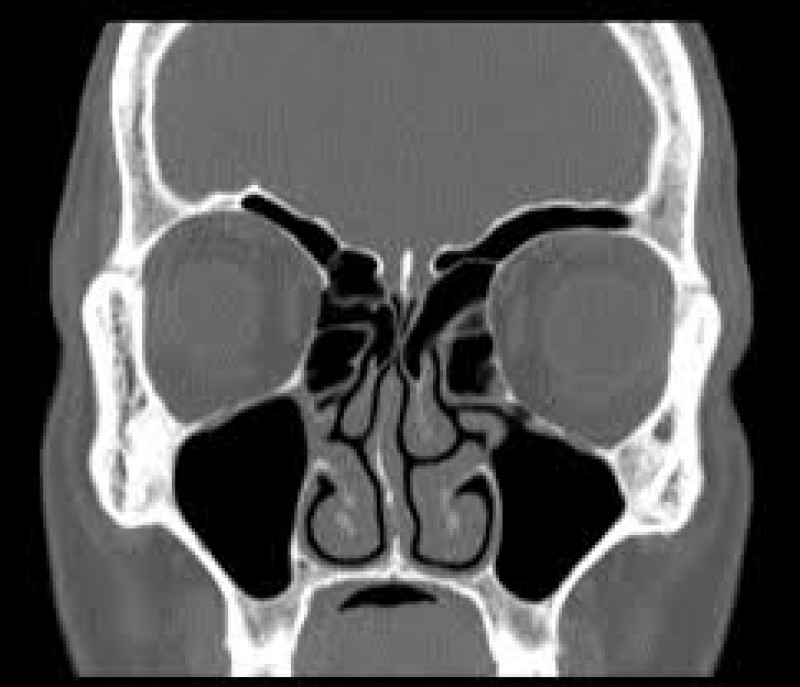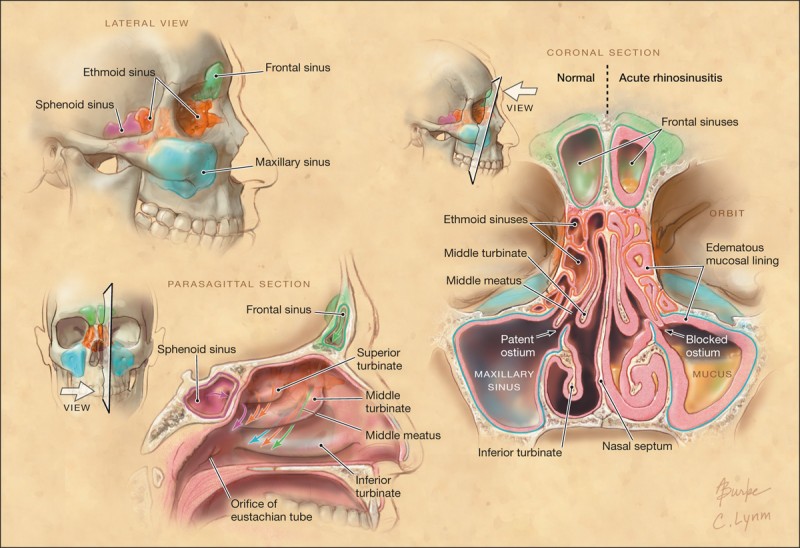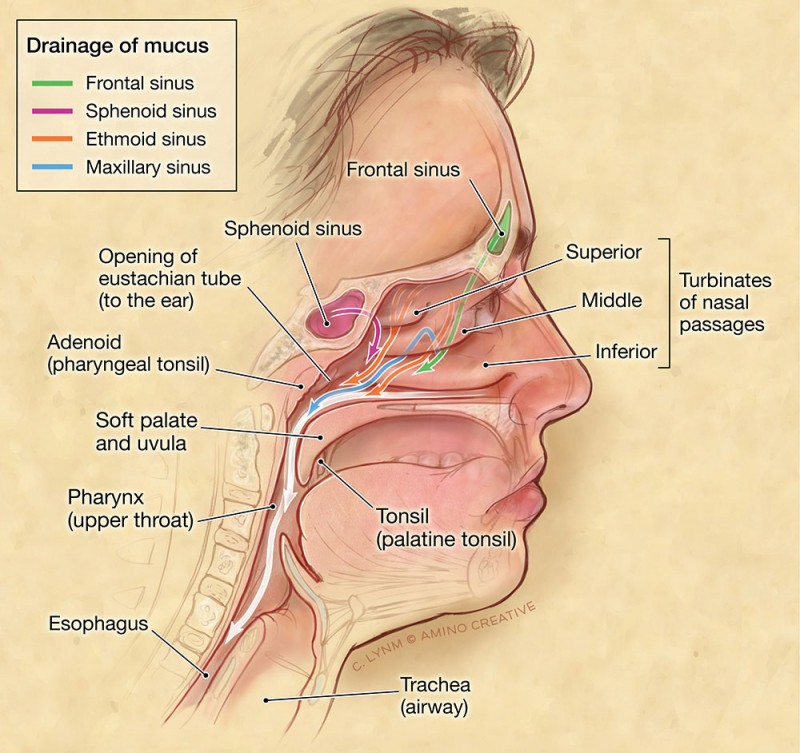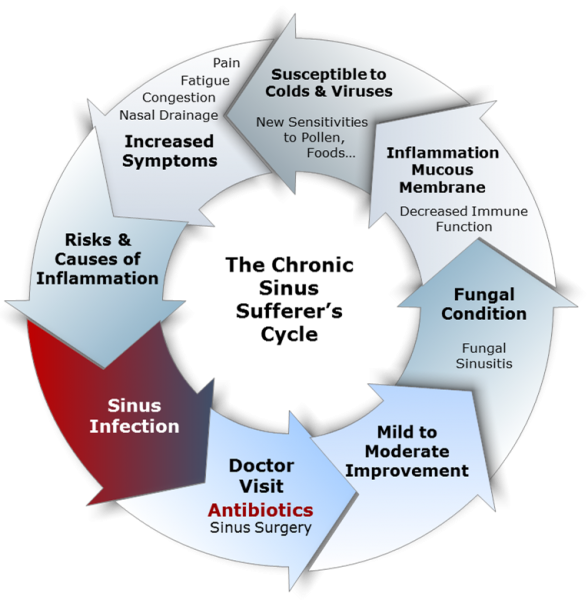How the sinuses work
The nose and sinuses work furiously around the clock to produce a blanket of mucous that protects the delicate linings and "processes" all the air-borne threats we face every day. For instance, there are infection fighting components in nasal and sinus mucous.
The nose and sinuses are connected by tiny passages, smaller than the pupil of the eye, that keep the air inside the sinus constant and also serve to carry mucous from the sinuses into the nose. Both nasal and sinus mucous move on a wave of very tiny hairs, called cilia. The movement is called muco-ciliary clearance. All the mucous from the sinus moves toward the one small opening into the nose, joins the nasal mucous and then both move together toward the back of the nose and down the throat.
Patients frequently complain about the "drainage down my throat", having never been told that it is a normal physiologic event and must be accepted as such. It is, however, increased in cases of allergy, cold, infection and/or exposure to airborne irritants and thus can be a sign of trouble.
Free and easy movement of the mucous out of the sinuses and from the front to the back of the nose is very important. If the nose is blocked, it may "run", the mucous coming out of the front rather than going down the back. When the small sinus openings are blocked, even partially, sinus health deteriorates, leading to congestion, stuffiness and ultimately infection.
In an effort to clear the congestion or infection, the nose and sinuses produce even more mucous, frequently resulting in more congestion, mouth breathing, poor sleep, fatigue, cough, frequent throat clearing, decreased sense of smell, facial discomfort, excessive post-nasal drainage and a general overall decline in quality of life. Failing to show clearing in 5-7 days, these are signs of a sinus infection, not a simple cold.






